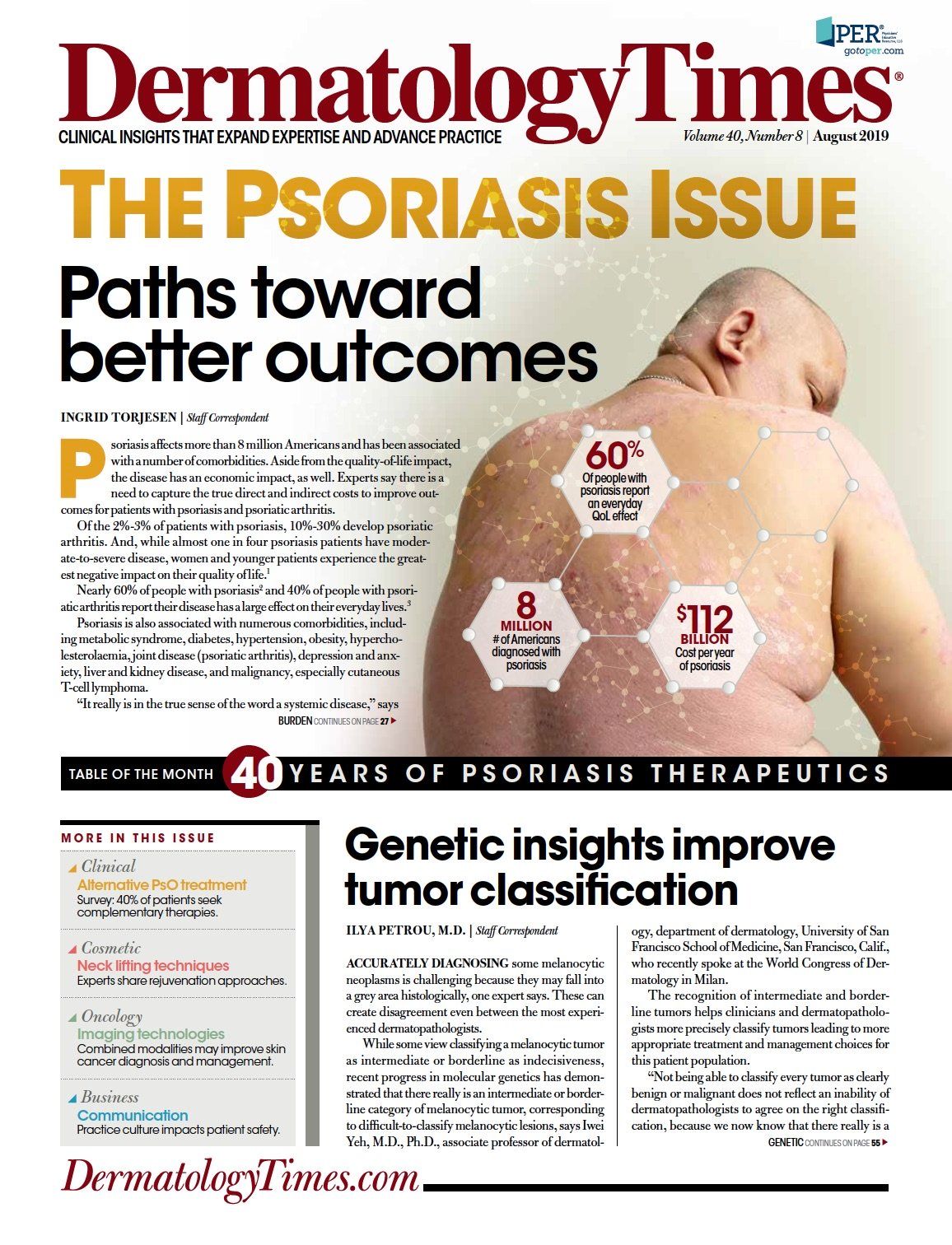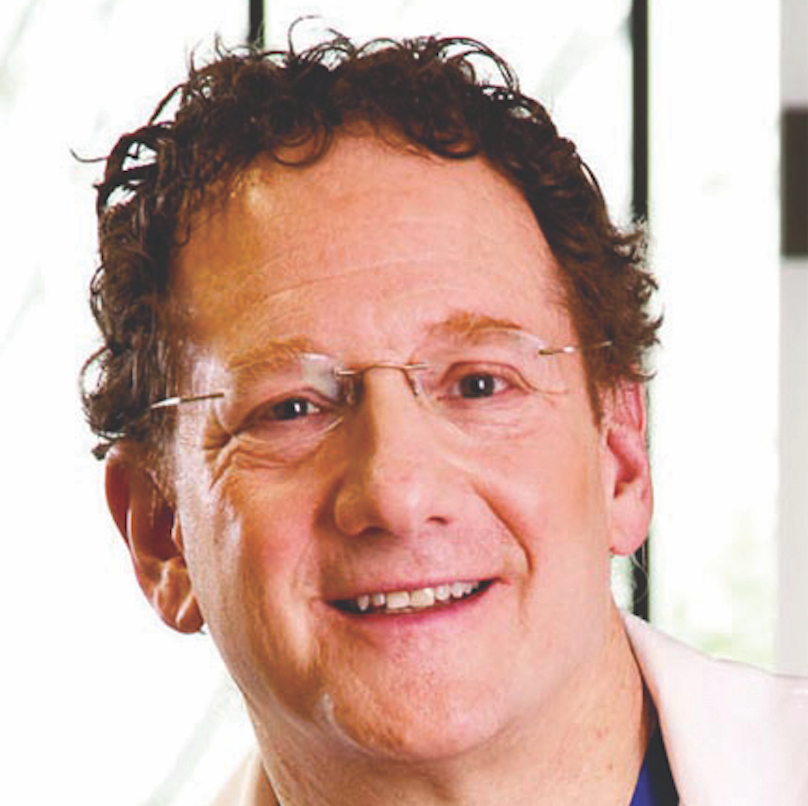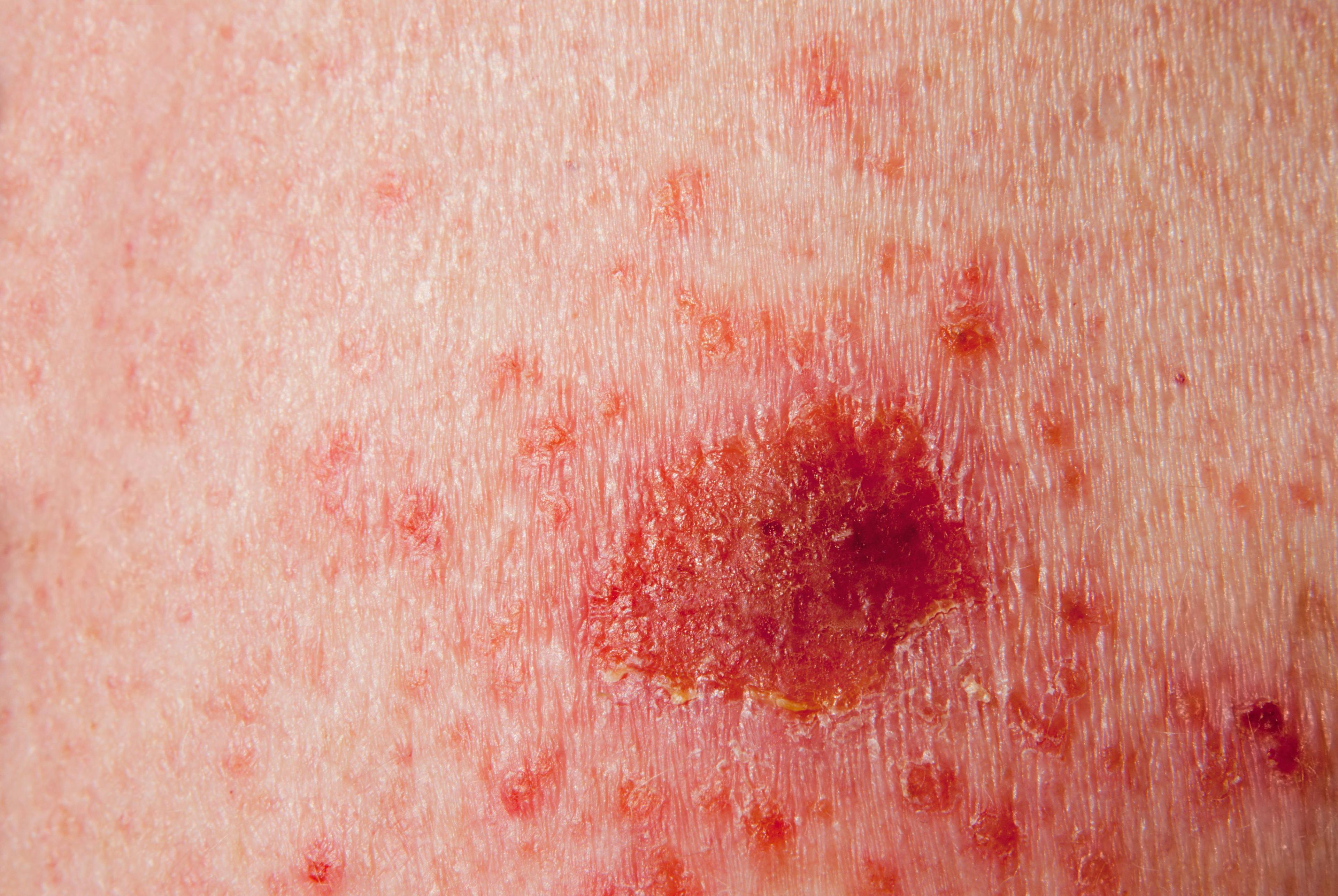- Acne
- Actinic Keratosis
- Aesthetics
- Alopecia
- Atopic Dermatitis
- Buy-and-Bill
- COVID-19
- Case-Based Roundtable
- Chronic Hand Eczema
- Chronic Spontaneous Urticaria
- Drug Watch
- Eczema
- General Dermatology
- Hidradenitis Suppurativa
- Melasma
- NP and PA
- Pediatric Dermatology
- Pigmentary Disorders
- Practice Management
- Precision Medicine and Biologics
- Prurigo Nodularis
- Psoriasis
- Psoriatic Arthritis
- Rare Disease
- Rosacea
- Skin Cancer
- Vitiligo
- Wound Care
Publication
Article
Dermatology Times
An introduction to homeopathy for the dermatologist
Lawrence Chukwudi Nwabudike, M.D., MBBS, MRCP (U.K.), PhD delves into what dermatologists need to know about homeopathy.
Lawrence Chukwudi Nwabudike, M.D., MBBS, MRCP (U.K.), PhD

Medicine is not just an art and a science, but it is also a calling. It requires the ability to empathize and is always based on principles. A fundamental, driving principle of good medical practice is to take what can potentially help the patient, examine it and apply it - even if it appears to fly in the face of currently accepted principles. We may actually learn something new.
Nowhere in medicine does a therapeutic modality appear to defy current medical precepts than homeopathy. This is because homeopathic medicines (homeopathic remedies as they are often referred to by homeopaths) are often so diluted as to not contain any molecule of the original substance. Also, they are based on the principle of similia similibus curentur or “like cures like”, i.e. a substance that can cause symptoms of a disease at a high concentration may cure that disease at a lower concentration.
While these principles appear at first glance to be implausible, one only needs to look at other complementary and alternative medicine (CAM) methods of therapy, such as acupuncture, meditation and prayer.
With acupuncture, needles are regularly inserted into the skin at certain points known as acupoints in order to treat disorders that have no known anatomic connection with the diseased organ, such as the Large Intestine point 4, between the thumb and index finger, which is used to treat headaches, sinusitis, constipation and even to assist in labour. Acupuncture is a widely accepted method of therapy and is even on the latest World Health Organisation WHO ICD classification.
HISTORY OF HOMEOPATHY
Homeopathy is a system of medicine founded about 200 years ago in Germany, by the physician Samuel Friedrich Christian Hahnemann (10 Apr 1755 – 02 Jul 1843).1,2 He studied medicine at Leipzig and Vienna and attained an MD degree at Erlangen in 1779.1,2 In Leipzig in 1790, while translating William Cullen’s treatise of Materia Medica, he came upon the assertion that cinchona cured malaria because it could induce the symptoms of this disorder.
Hahnemann ingested some and developed fever, chills and joint pains, all symptoms of malaria. This led him to believe that a substance that can produce symptoms of a disease in a healthy person, may also do this in a sick person. Due to his disillusionment with the medical practices of his day, such as blood-letting and purging, Hahnemann turned his back on medical practice and chose instead to translate. He was a highly regarded chemist, author and translator;1 he died a successful and wealthy physician in Paris.
The principle of similars was already espoused well before Hahnemann. Hippocrates reportedly used this principle and treated mania by using Mandrake root, because its can induce symptoms of mania.3 Paracelcius is also reported to, like Hippocrates, have espoused the principle similia similibus curentur.3
Hahnemann experimented with many different substances; thus, developing a system of dilution and succussion, which helped to eliminate toxicity of the remedies while increasing their efficacy.
Homeopathy was found to be useful during the cholera pandemics that hit Europe, although evidence suggests the medical establishment of the day attempted to suppress these results.4
Also, it would appear that a precursor of today’s placebo controlled, blinded, randomised trials was a homeopathic trial commissioned by the British government to help it in its search for antidotes to mustard gas exposure, after World War I. Although the trials appeared to have been well done and showed mostly positive outcomes, it is unclear why the British government failed to accept these results.5
The oldest national medical society in America is the American Institute of Homeopathy, founded on April 10, 1844, one year after the death of Samuel Hahnemann. It is still in existence and functioning today.
HOMEOPATHIC MEDICINES
Homeopathic medicines come in several forms. They are invariably forms of dilution (potencies, as homeopaths refer to them), principally the D and the C potencies, for dilution orders of 10 or 100, respectively, are in use.
The remedies are prepared from a mother tincture, in which the undiluted substance is diluted by a factor of 10 or 100 to make a D1 or a C1 potency (i.e. 1/10 or 1/100). From these a D2 and C2 potency (i.e. 1/100 and 1/10,000) are derived, with D3 and C3 (i.e. 1/1,000 and 1/1,000,000) potencies being derived from D2 and C2 and so on.
Thus, a C12 potency is a 10012 dilution (1/1/000,000,000,000,000,000,000,000). Hahnemann regularly used C30 dilutions and M (C1000) and higher dilutions exist today
Each dilution is followed by a process of shaking with banging on an elastic surface, a process known as succussion.
These high dilutions are unlikely to contain molecules of the original substance, yet, the higher the dilution, the deeper the effect of the remedy. Thus, the lower potencies, C12, 15 or 30 address more physical complaints, while the deeper, psychological complaints are addressed by higher potencies such as C200 or M.
Chemistry suggests that there should be no molecules of substance at C12, thus there appears no rational explanation for the effects of homeopathy and this appears to fuel much of the skepticism of this practice.
Nonetheless, homeopaths contend that they work, and more recent evidence suggests that there may be a nanoparticle basis for the functioning of homeopathy.6 There appears also to be evidence from research, clinical and laboratory data to show that homeopathy does exert an effect beyond placebo. Some of this research is listed at the Faculty of Homeopathy website in the UK7 as well as on the website of the American Institute of Homeopathy.8
These research lists counter the arguments from other studies that appear to show that homeopathy effects are not statistically significant.
Opponents of homeopathy contend that any benefits that may occur from homeopathy are a result of the placebo effect. In other words, an effect based on patients’ expectation of benefit. However, homeopathy is useful in infants,7,9 animals10 and even in plants,11 all situations in which the placebo effect is unlikely to be significant.
Homeopathic medicines are available as aqueous solutions (alcohol or water), as powders, pellets/granules and tablets.
HOMEOPATHY IN DERMATOLOGY
Many dermatological diseases do not have definitive cures and the available treatments sometimes have serious potential side-effects. Patients can therefore suffer from these disorders for many years, with corresponding effects on their quality of life over this period. These are some of the reasons why patients turn to CAM methods, including homeopathy.12
Homeopathy is by nature a therapeutic system that is individualised and based on the psyche of the individual. This is in line with evidence from regular dermatologic practice that suggests that many chronic dermatoses have an underlying psychosomatic basis.
The literature suggests homeopathy’s efficacy in the therapy of dermatological diseases is growing and includes research, which suggest its usefulness for acne,13 atopic dermatitis,9,14 lichen planus,15,16 cutaneous lymphoma,17 psoriasis,18,19 rosacea,20 and dermatitis herpetiformis,21 amongst others.
The special characteristic of homeopathic medicines of not having molecules in them makes them attractive for use in pregnancy, as teratogenicity is not likely to be a significant issue.
Allergy and toxicity are also not to be expected with the use of homeopathic medicines. However, following the use of homeopathic remedies, especially individualised treatments, there may be an initial aggravation, followed by an amelioration. Patients need to know this, as it an important sign of a correctly selected remedy, but may be a source of anxiety for the patients.
Usually, following the application of properly selected homeopathic treatments there is a tendency to permanent remission.
Homeopathic therapies are very cheap and therefore have the possibility of bringing down healthcare costs, while being at the same time environmentally friendly.
Many physicians have shown a desire to learn about CAM, in order to better advice their patients who may wish these treatments.22
CONCLUSIONS
Homeopathy is a system of medicine, which is gentle and safe for all categories of patients, including infants and pregant women.
Homeopathic treatment should usually be given by a trained physician, so that the patient’s clinical status can be properly monitored.
Although there have been reports of serious adverse effects, these have often been of products wrongly labelled as being homeopathic.
By its very nature, i.e. treating each person as an individual, homeopathic therapy and research has the potential to drive a paradigm shift in medicine and its approach to health and disease. Empathy is necessary for good medical practice and homeopathy requires empathy in order to achieve good results.
Empathy has been shown to improve patient outcomes, while avoiding burnout in physicians.23 As a result, homeopathy is potentially able to result in a gain for the entire medical system by way of lowering costs, improving patient outcomes and reducing burnout in physicians who practice it. Â
References:
1. Dean ME. Homeopathy and “the progress of science”. Hist Sci. 2001;39(125 Pt 3):255-83.
2. Samuel Hahnemann. Britannica website. https://www.britannica.com/biography/Samuel-Hahnemann. Accessed June 27, 2019.
3. Hemenway HB. Modern Homeopathy and Medical Science. JAMA. 1894; XXII(11):367–77.
4. Dean ME. Selective suppression by the medical establishment of unwelcome research findings: the cholera treatment evaluation by the General Board of Health, London 1854. J R Soc Med. 2016;109(5):200-5.
5. Dean ME. The mustard gas experiments done by the British Homoeopathic Society for the Ministry of Home Security, 1941-1942. J R Soc Med. 2014;107(11):453-5.
6. Chikramane PS, Suresh AK, Bellare JR, Kane SG. Extreme homeopathic dilutions retain starting materials: A nanoparticulate perspective. Homeopathy. 2010;99(4):231-42.s
7. The Research Evidence Base for Homeopathy. Faculty of Homeopathy website. https://facultyofhomeopathy.org/wp-content/uploads/2016/03/2-page-evidence-summary-for-homeopathy.pdf. Accessed July 2019.
8. Homeopathy Research Evidence Base: References. American Institute of Homeopathy website. https://homeopathyusa.org/uploads/Homeopathy-Research-Evidence-Base-05-15-2019.pdf. Accessed July 2019.
9. Nwabudike LC. Atopic Dermatitis and Homeopathy. Our Dermatol Online. 2012; 3(3): 217-220.
10. Vockeroth WG. Veterinary homeopathy: an overview. Can Vet J. 1999;40(8):592–4.
11. Shah-Rossi D, Heusser P, Baumgartner S. Homeopathic treatment of Arabidopsis thaliana plants infected with Pseudomonas syringae. ScientificWorldJournal. 2009;9:320–30.
12. Sivamani RK, Morley JE, Rehal B, Armstrong AW. Comparative prevalence of complementary and alternative medicine use among outpatients in dermatology and primary care clinics. JAMA Dermatol. 2014;150(12):1363-5.
13. Nwabudike LC. Case Reports of Acne and Homeopathy. Complement Med Res. 2018;25(1):52-55.
14. Itamura R, Hosoya R. Homeopathic treatment of Japanese patients with intractable atopic dermatitis. Homeopathy . 2003; 92(02): 108-14.
15. Mousavi F, Sherafati S, Mojaver YN. Ignatia in the treatment of oral lichen planus. Homeopathy. 2009;98(1):40-4.
16. Nwabudike, LC, Miulescu, M, Tatu, AL. Case series of an alternative therapy for generalised lichen planus: Four case studies. Experimental and Therapeutic Medicine. 2019;18(2): 943-48.
17. Nwabudike LC. Homeopathy as Therapy for Mycosis Fungoides: Case Reports of Three Patients. Homeopathy. Epub ahead of print July 25 2019
18. Nwabudike LC: Palmar and plantar psoriasis and homeopathy- Case reports. Our Dermatol Online. 2017; 8(1): 66-9.
19. Witt CM, Lüdtke R, Willich SN. Homeopathic treatment of patients with psoriasis--a prospective observational study with 2 years follow-up. J Eur Acad Dermatol Venereol. 2009;23(5):538-43.
20. Nwabudike LC Proc. Rosacea and Homeopathy. Proc. Rom. Acad., Series B, 2012, 14(3): 207–11
21. Nwabudike LC. Homeopathy in the Treatment of Dermatitis Herpetiformis-A Case Presentation. Homoeopathic Links. 2015; 28(01):044-6.
22. Winslow LC, Shapiro H. Physicians Want Education About Complementary and Alternative Medicine to Enhance Communication With Their Patients. Arch Intern Med. 2002;162(10):1176–81.
23. Yuguero O, Forné C, Esquerda M, Pifarré J, AbadÃas MJ, Viñas J. Empathy and burnout of emergency professionals of a health region: A cross-sectional study. Medicine (Baltimore). 2017;96(37):e8030.

Newsletter
Like what you’re reading? Subscribe to Dermatology Times for weekly updates on therapies, innovations, and real-world practice tips.


























